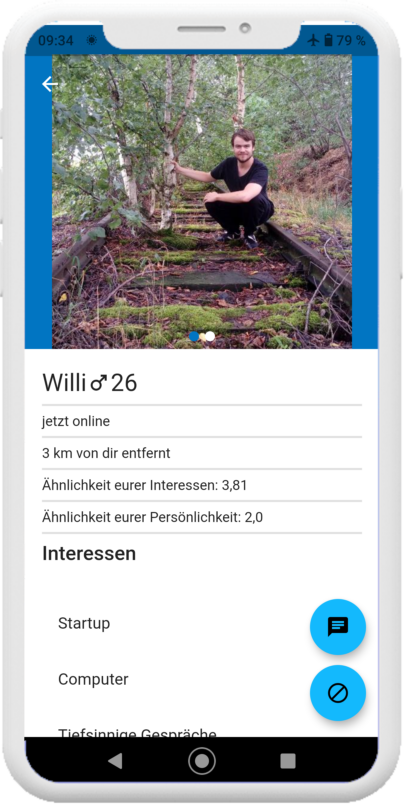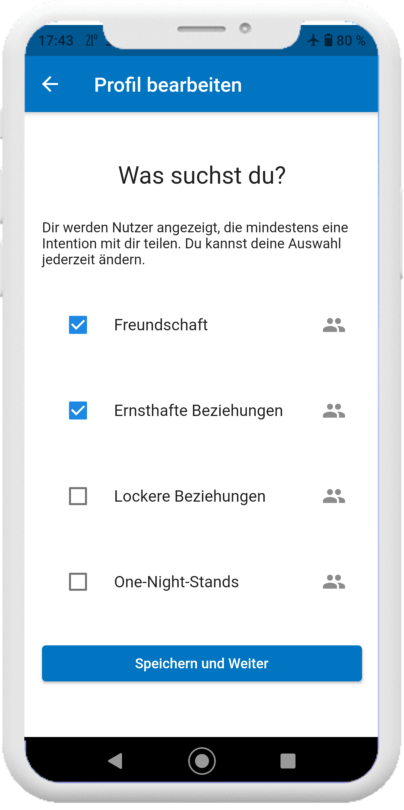Founding Is Contagious
In conversations with family and friends, it becomes clear time and again how many of them would like to embark on the “start-up adventure” themselves. But in the end, only a few dare to do it and are not afraid of failure. Even a look at the statistics is hardly motivating. Especially considering the very low percentage of female founders, we are all blocking a lot of potential.
Our view of the future
For this reason, we discovered early on that we would also like to motivate others to take this step.
We naturally focus primarily on the present and our challenges as we develop our product and our company. But we always take the time to speculate about the future. We think about where we want to go. We talk about visions and goals. This regular deep questioning is very important for us to get a common understanding of each other’s priorities.
A jointly formulated vision was: we help other founders to realize their dreams. We firmly resolved that at some point, with a lot of experience, a network and perhaps some capital. We would help others to make the world a little better. For us, this is especially true for our own employees, if they want to become founders themselves. This strategy was often met with incomprehension: “Others are scrambling for new employees, and you still want to help your people leave the company!” We see it a little differently. Why should it be in our interest to talk our Peers out of starting their own companies, if apparently their inner voice says otherwise? Our strategy is not fighting against developments, but steering them in the right direction. In line with that the strategy also makes good business sense in our eyes.
- We live the personal development of our employees. We stand by this promise, even if it does not serve our interests.
- If we can support others from within Peerox and achieve a shared success, it is a success and return for all Peers.
- We are creating a trust-based ecosystem. That’s why the startup-focused Peer will also go full throttle in the Peerox spirit to eventually enable us to make this vision a reality.
But back to reality! We struggle every day with bugs, difficult decisions, sudden challenges and long sales cycles. Until we help others get started, we have to make sure we do our homework first.

With the foundation of Peerox we have fulfilled a dream – the great freedom to be able to decide everything for ourselves. To be able to determine what we do, how, and when, and to bear full responsibility is a great feeling.
Things never come out the way you expect
However, the vision of Peerox is not only the vision of the two founders. We also addressed the idea of founding start-ups out of Peerox at a joint vision evening. And also during job interviews, including that with Willi Sontopski. Willi applied to us as a software developer and told us about his own start-up idea. He had an app in mind that would make finding friends easier than ever. Even though we weren’t immediately blown away by the product idea, we were fascinated by his passion and fire. While he got off to a tremendously impressive start at Peerox and now leads his own small backend development team, he worked tirelessly and with seemingly endless energy on his app in his spare time. Suddenly, he stood in front of us and said, “I’ve finished the prototype and would love to get this out there with you guys.”

Thanks to AI, the Conngenial app can “compare apples with oranges” and still identify the commonalities that connect at the core.
Conngenial – Much more than ‘just another’ social app
We were pretty flabbergasted and let him show us his prototype in detail for the first time. It quickly became clear to us that our first thought of “not-yet-a-social-app” was way off the mark. Willi has designed and implemented something that neither of us had ever seen before. It’s simple, intuitive and downright ingenious. The app “Conngenial” is based on describing your interests, preferences and personality via free tags. It also defines your search goals (friends, romantic relationships, etc.). A machine learning algorithm uses NLP (Natural Language Processing) to analyze this information and calculate a similarity score. For example, dog lovers and cat lovers have a common preference for pets. Another example is that downhill fans and mountain bikers share a fascination for bicycles.






This Post Has 0 Comments